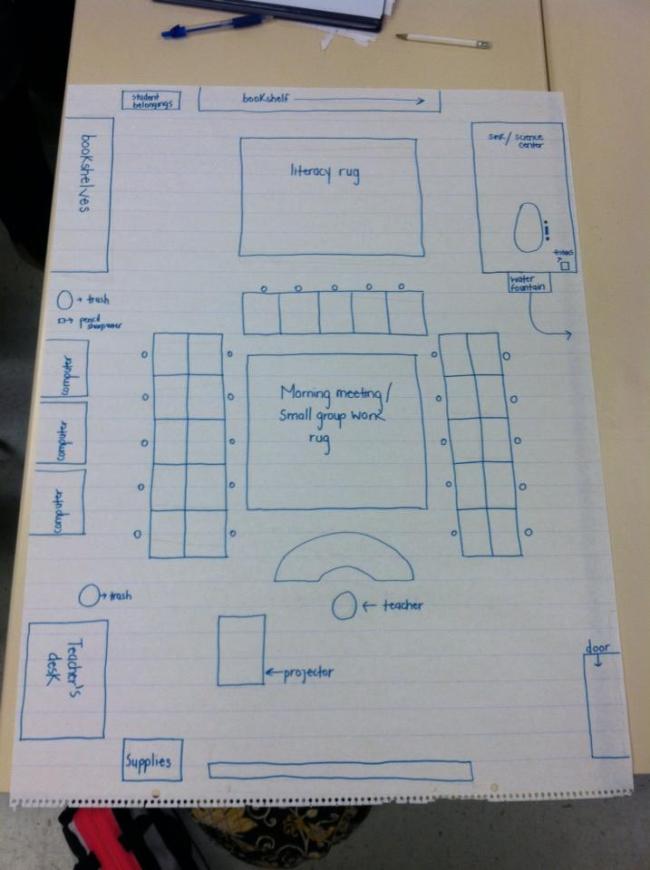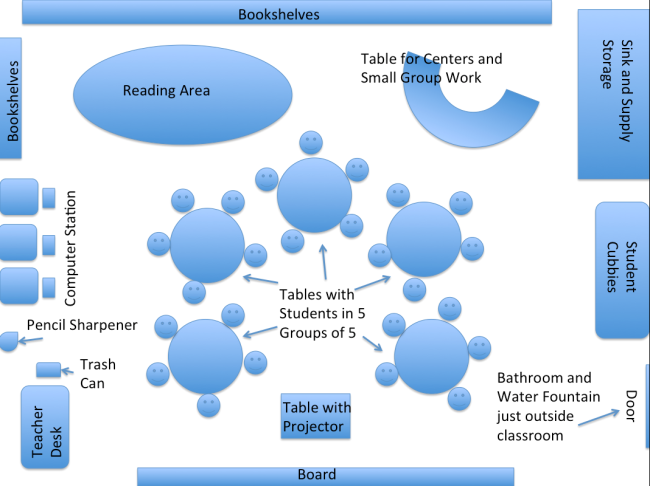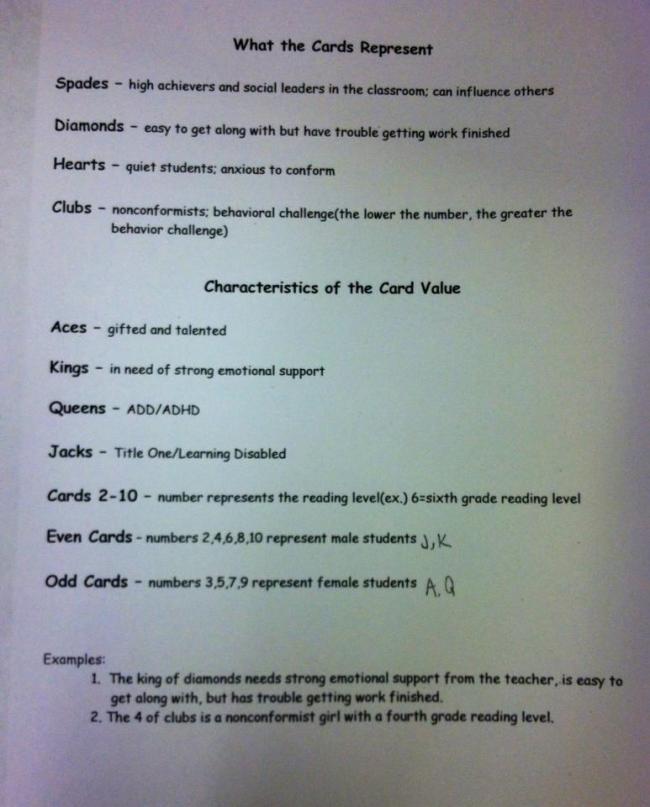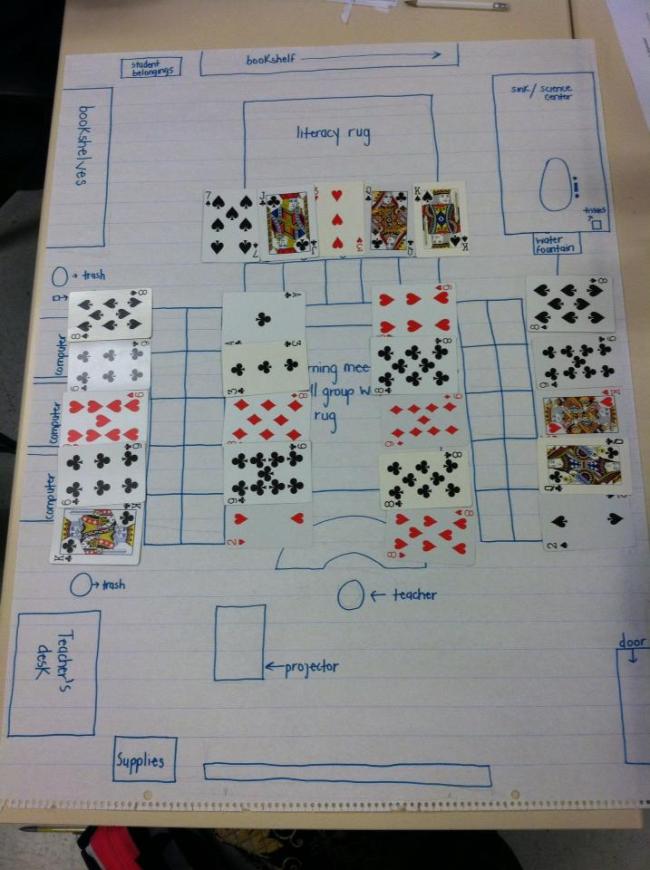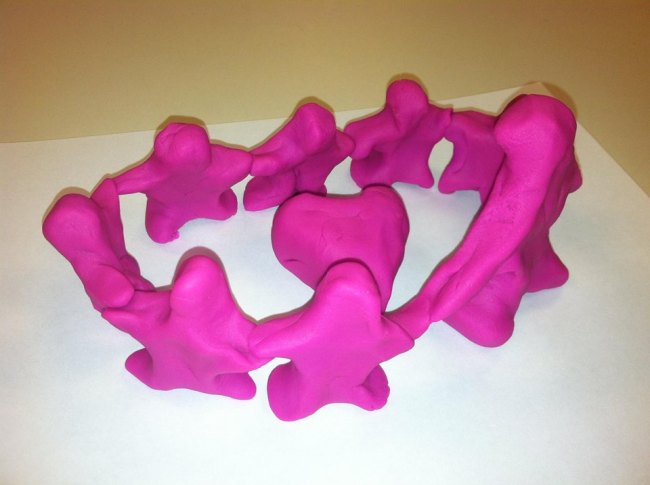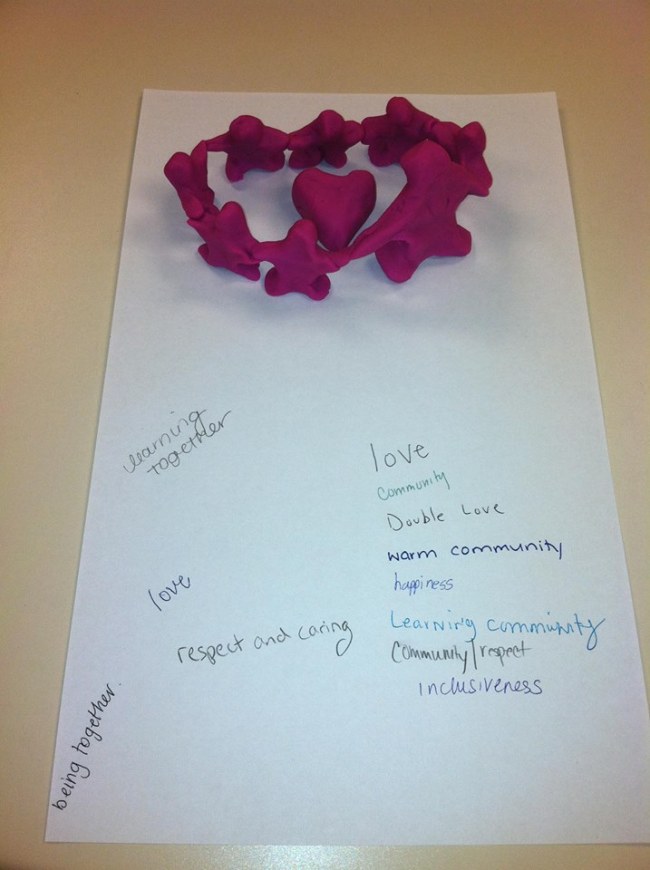At the beginning of the semester, I did an assignment that involved learning about the students in my practicum classroom. In completing these profiles on my students, I began to understand how unique each student was. They all liked different books, had different hobbies, and enjoyed different school subjects. They also all learned in different ways and excelled in different tasks. In the portion of the assignment in which I did an investigation of the community, I discovered how diverse the backgrounds of the students in one classroom could be. I also realized how different the culture and backgrounds of students in a school can be from the teachers who are teaching them.
Effective educators differentiate instruction based on this information they collect about their students. Tomlinson and Moon (2013) outline some principles that guide effective differentiated instruction. Two of these key principles are quality curriculum and instruction that responds to student variance. Differentiation should also create an environment that supports and encourages learning from all students. In discussing the curriculum in schools, Eisner (2001) points out the existence of an implicit and explicit curriculum. There are the explicit lessons being taught, that one might find in a lesson plan, but there is also an implicit curriculum that students are learning in the process. This implicit curriculum is everything the students are learning about what is valued or important. Whether things are included or excluded in the curriculum or what qualities teachers seem to value all have an impact on students. Delpit (2006) discusses how there are cultures of power and those who are not already a part of this culture may struggle to assimilate as they navigate the rules and codes of this culture. As a teacher, this is important to keep in mind when planning classroom management systems and in creating a classroom environment that is respectful of the diversity of the students in it.
Effective and culturally-responsive teachers consider issues of diversity not only in classroom management, but also in the curriculum. Students from all backgrounds should be able to see themselves reflected in the curriculum. Banks (2010) describes the various levels at which teachers can introduce multiculturalism. The most basic and superficial approach is the contributions approach, which injects figures like Martin Luther King Jr. or Pocahontas into mainstream instruction with no other change to the basic curriculum or deeper portrayals of other cultures or communities. The transformation approach, on the other hand, is more involved and alters the basic assumptions of the mainstream curriculum. Under this approach, students are provided with multiple representations of content from several ethnic viewpoints and encouraged to conceptualize each culture as its own interactive entity rather than simply a contribution to mainstream common society. The next step from this is a social action approach in which students are additionally provided with a sense of political efficacy by participating in activities to do with social criticism and social change.
Creating a curriculum that is multicultural in nature is important to representing student diversity in the classroom, but it is also important to creating better citizens of the world and critical thinkers out of our students, no matter the cultural background. Sleeter (2005) proposes designing curriculum around big ideas. In balancing academic standards with rich and interesting ideas, this is a helpful way to conceptualize the curriculum. This semester I had some practice with this, creating a unit lesson plan in the method of Wiggins and McTighe (2005). Using backward design, I was able to create a unit with performance assessments and more authentic instruction focused on teaching for understanding. In this way, big ideas such as perspective-taking and multiculturalism can be incorporated with the skills and academic content found in the standards to create lessons that address both student diversity and scholastic goals.
For my internship experience next semester, my goal is to get to know as much as I can from the beginning about the students as individuals and as members of their community. I hope to incorporate this information about my students into creating lesson plans that are both engaging and of personal interest to the students. A reading interest survey, for example, done on the first day can be a great way to establish an early understanding of your students as readers. In creating a behavior management plan that is successful for the class I am in, I will also want to know as much about the individual students as possible and which approaches might work best for them as individuals, but also as a group. I will want to determine which types of positive reinforcement will be the most impactful as well as which consequences will be the most meaningful. Within individual lessons, successful differentiation also depends on assessing student understanding regularly and considering other forms of student data. I intend to combine both my own anecdotal notes and observations with more formal collections of student data to ensure that lessons are differentiated wherever possible. Having high expectations for all students begins with effective teaching practices in both planning and instruction.
References
Banks, J.A. & Banks, C.A.M. (2010). Multicultural education: Issues and perspectives (7th ed.). Hoboken, NJ: John Wiley & Sons, Inc.
Delpit, L. (2006). Other people’s children: Cultural conflict in the classroom. New York, NY: The New Press.
Eisner, E.W. (2001). The educational imagination: On the design and evaluation of school programs (3rd ed.). Upper Saddle River, NJ: Pearson.
Sleeter, C.E. (2005). Un-standardizing curriculum: Multicultural teaching in the standards-based classroom. New York, NY: Teachers College Press.
Tomlinson, C.A. & Moon, T.R. (2013). Assessment and student success in a differentiated classroom. Alexandria, VA: ASCD.
Wiggins, G. & McTighe, J. (2005). Understanding by design. Alexandria, VA: ASCD.
